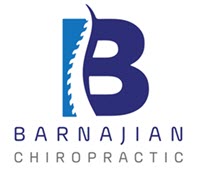Chiropractic is the fastest-growing and second-largest primary healthcare profession.
There are approximately 60,000 doctors of chiropractic (DCs) in active practice in the United States spreading from rural areas to inner cities. More than 10,000 students are currently enrolled in chiropractic educational programs accredited by a federally-recognized body (CCE).
Chiropractic services are in high demand.
Tens of millions of Americans routinely opt for chiropractic services and this number is rapidly growing. In 1993, more than 30 million consumers made chiropractic a regular part of their healthcare program.
Doctors of Chiropractic receive extensive, demanding professional education on par with medical doctors (MDs) and osteopaths (DOs).
To receive the doctor of chiropractic degree, candidates must complete extensive undergraduate prerequisites and four years of graduate-level instruction and internship at an accredited chiropractic institution. Comprehensive knowledge of all systems of the body and diagnostic procedures enable the DC to thoroughly evaluate a patient, address disorders relating to the spine and determine the need for referral to another healthcare provider.
Doctors of Chiropractic are primary healthcare providers.
According to the Center for Studies in Health Policy, “The DC can provide all three levels of primary care interventions and therefore is a primary care provider, as are MDs and DOs. The doctor of chiropractic is a gatekeeper to the healthcare system and an independent practitioner who provides primary care services. The DC’s office is a direct access portal of entry to the full scope of service.”
Doctors of Chiropractic are licensed in all 50 states.
DCs have been licensed and recognized for many decades in all states, the District of Columbia and Puerto Rico.
Chiropractic is recognized by governmental healthcare programs.
Chiropractic is included in Medicare, Medicaid, Federal Employees Health Care Benefits Programs, Federal Workers’ Compensation and all state workers’ compensation programs. Chiropractic students are qualified to receive federal student loan assistance and DCs are authorized to be commissioned as healthcare officers in the U.S. Armed Forces.
Doctors of chiropractic provide effective, low-cost healthcare for a wide range of conditions.
Studies conducted according to the highest scientific standards and published by organizations not affiliated in any way with chiropractic institutions or associations continue to show the clinical appropriateness and effectiveness of chiropractic care. One of the most recent, funded by the Ontario Ministry of Health, stated emphatically that:
“On the evidence, particularly the most scientifically valid clinical studies, spinal manipulation applied by chiropractors is shown to be more effective than alternative treatments for low back pain…There would be highly significant cost savings if more management of low back pain was transferred from physicians to chiropractors.”
The doctor of chiropractic is an effective source of preventative and wellness care.
The anatomical focus of the DC on the human spine has created the perception of the DC as just a “back doctor.” Although this perception is not entirely incorrect, it is very much incomplete. Doctors of chiropractic are a highly appropriate resource in matters of work-place safety, stress management, injury prevention, postural correction and nutritional counseling.
